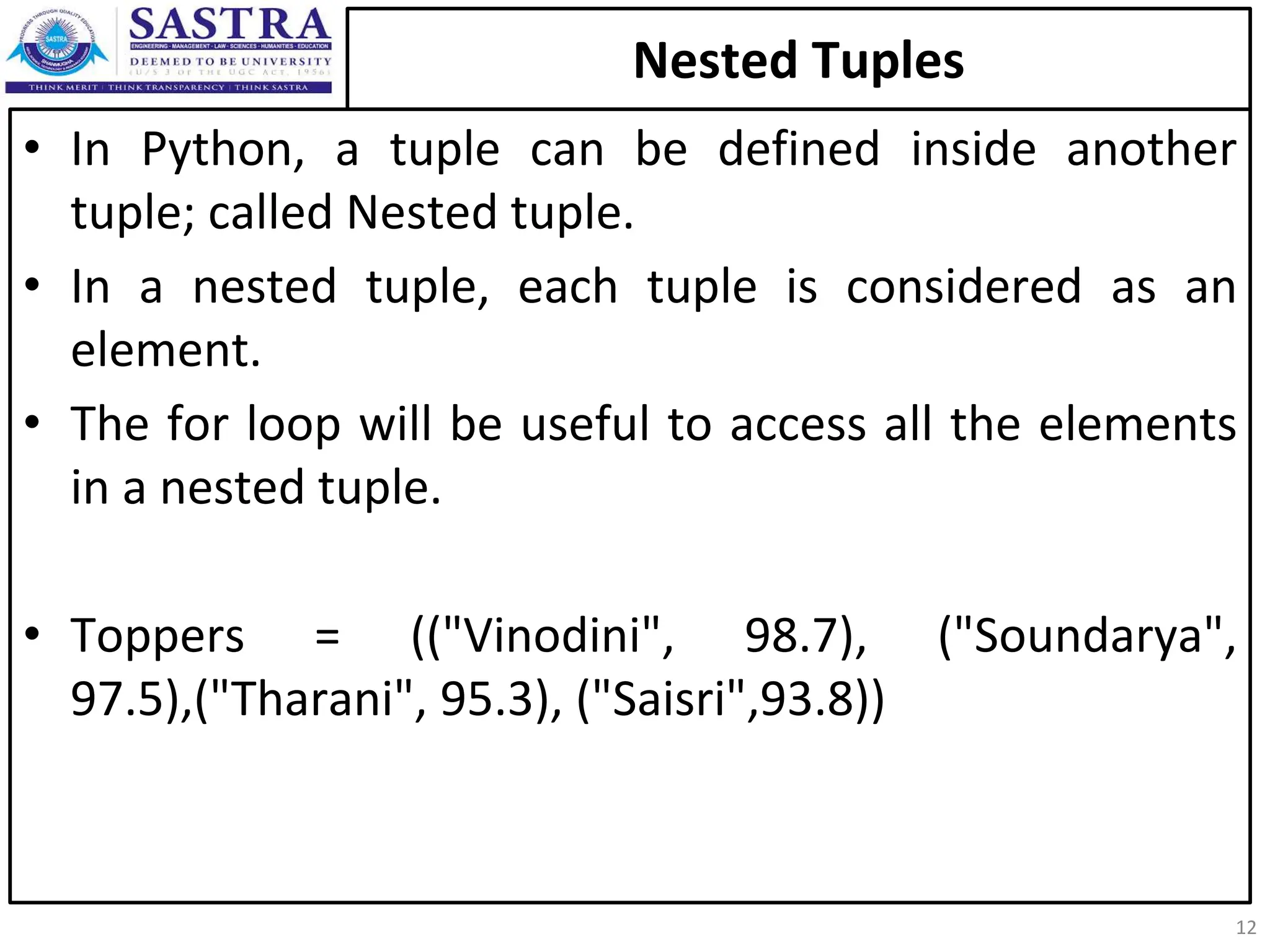Tuples are immutable ordered sequences used to store multiple elements. They are more performant than lists for fixed data that does not need to be changed. Tuples use parentheses and cannot be modified once created. They provide count and index methods to access elements and can be used with operators like + for concatenation and * for replication. Tuples can be nested to group related data and the for loop used to access nested elements.

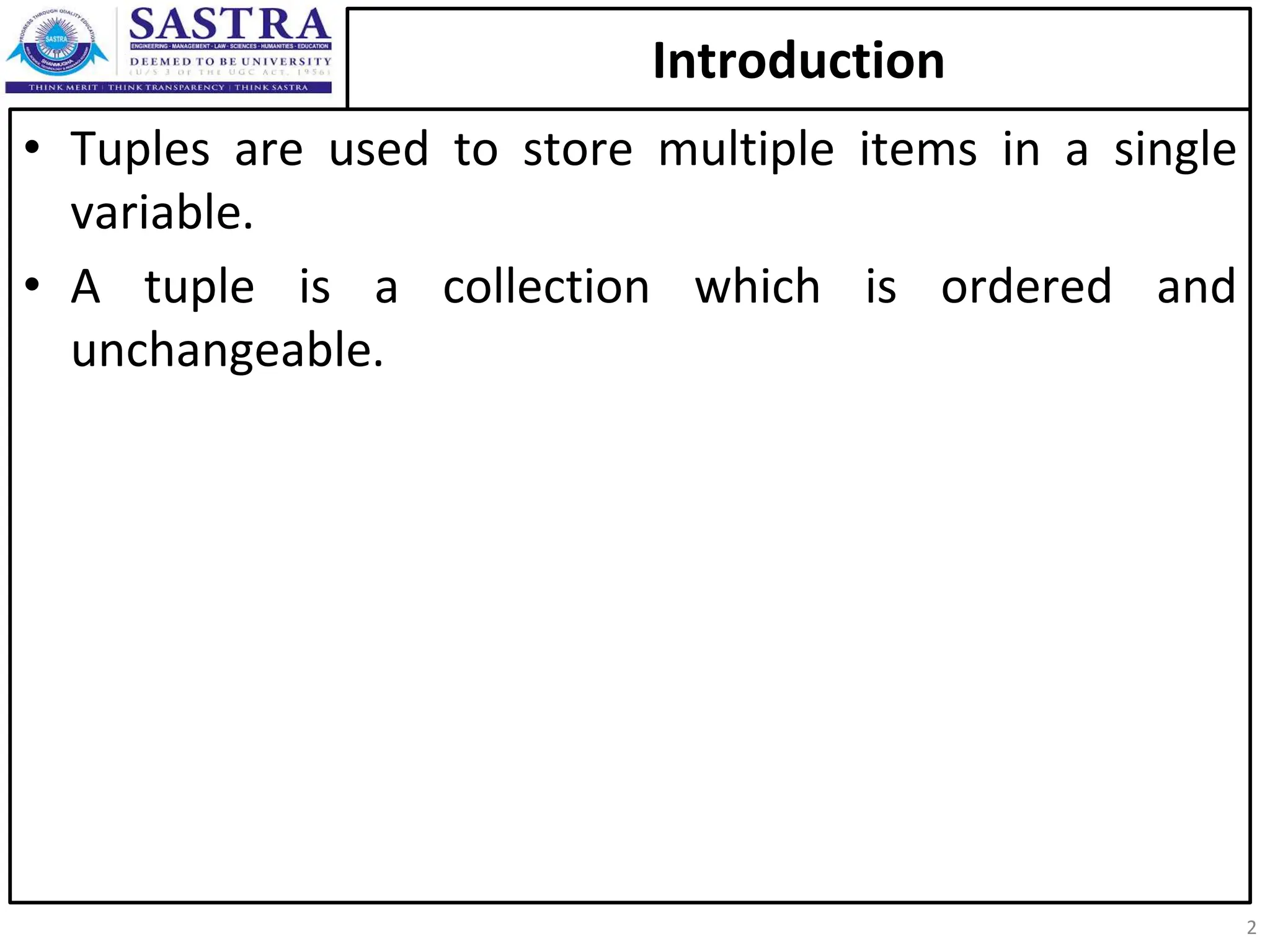
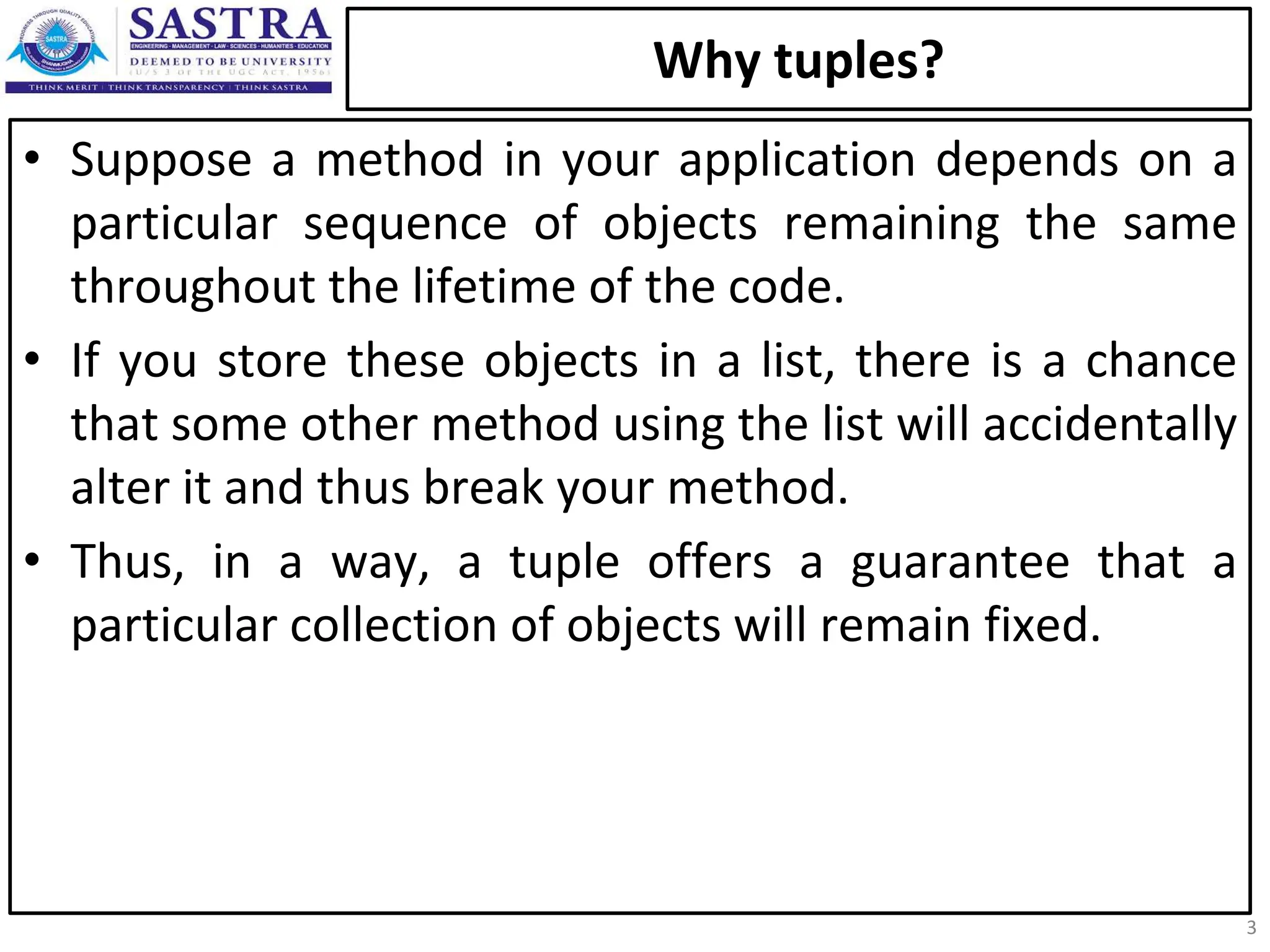
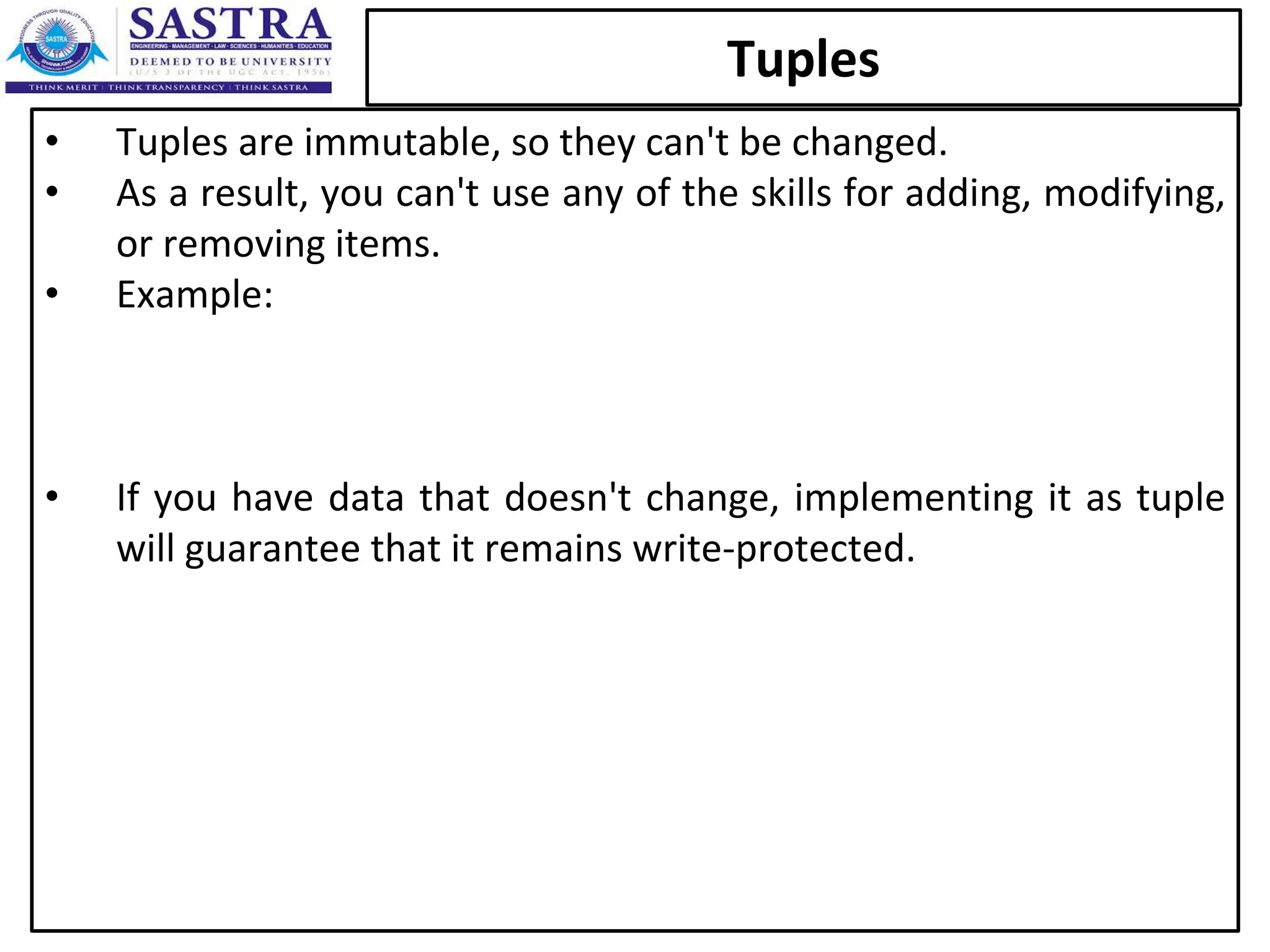

![Tuples
• Code that accesses items in a tuple
Ice_cream_flavors[0] # Vennila
Ice_cream_flavors[-1] # badam
Ice_cream_flavors[1:4] # (“strawberry”, “chocolate”,
“pista”)
• Code that unpacks a tuple
tuple_values = (1, 2, 3)
a, b, c = tuple_values # a = 1, b=2, c=3
6](https://image.slidesharecdn.com/1-240415034839-1bde57da/75/1-10-Tuples_sets_usage_applications_advantages-pptx-6-2048.jpg)

![Tuples
Tuples provide just two methods,
• t.count(x), which returns the number of times object x occurs in
tuple t,and
• t.index(x), which returns the index position of the leftmost
occurrence of object x in tuple t.
Tuples can be used with the operators
• + (concatenation),
• * (replication), and
• [] (slice), and
• with in and not in to test for membership.
• The += and *= augmented assignment operators can be used
even though tuples are immutable](https://image.slidesharecdn.com/1-240415034839-1bde57da/75/1-10-Tuples_sets_usage_applications_advantages-pptx-8-2048.jpg)
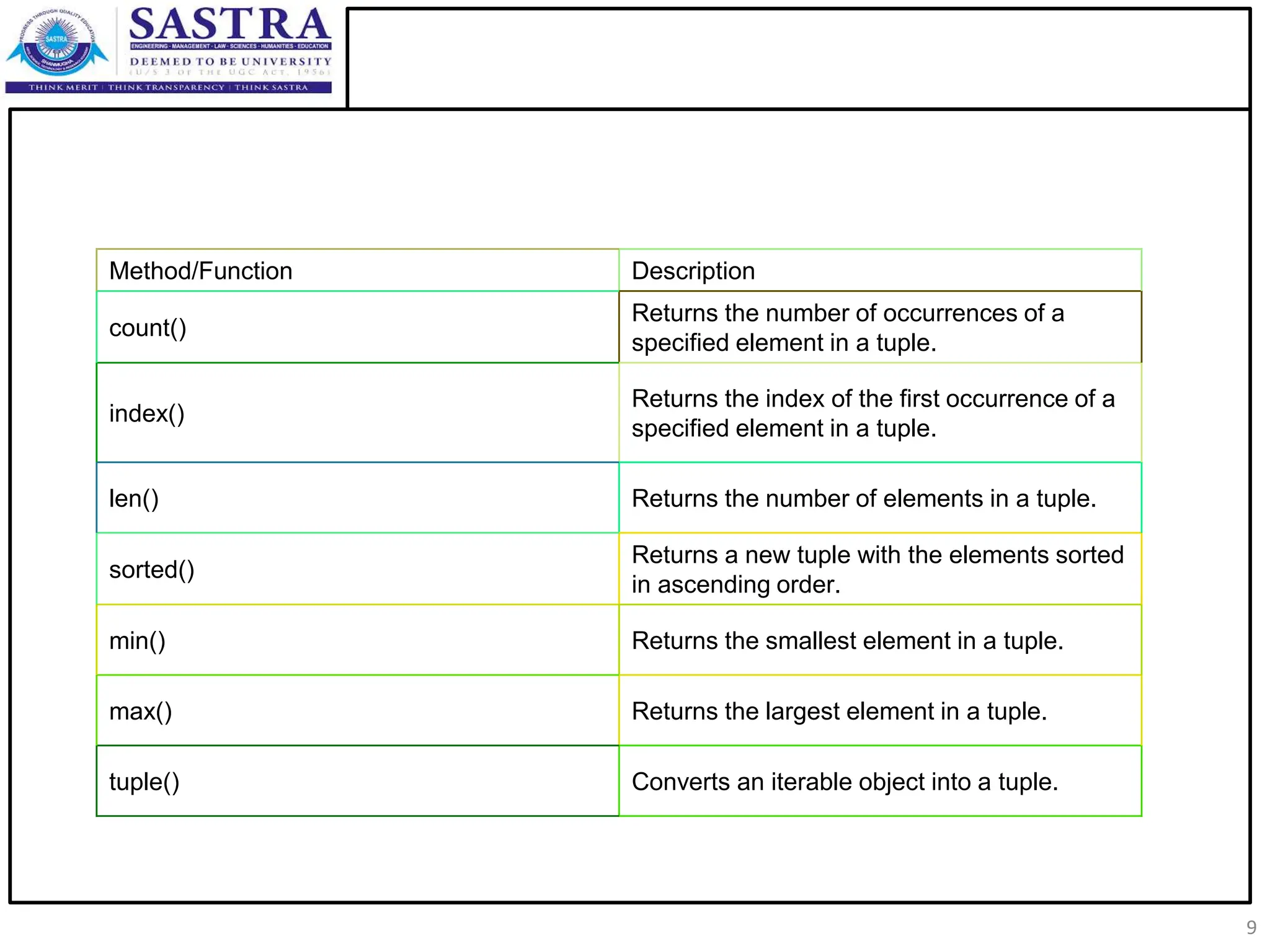
![Tuples - Example
Using tuple() method to create new tuple
• >>> t=tuple((1,2,3))
+ (concatenation operator usage in tuples)
• >>> t1=(4,5,6)
• >>> print(t+t1)
• (1, 2, 3, 4, 5, 6)
• >>> t3=t+t1
• >>> t3
• (1, 2, 3, 4, 5, 6)
• >>> t[:1] + (5,) + t[1:]
• (1, 5, 2, 3)
* (replication operator usage in tuples)
• >>> t*2
• (1, 2, 3, 1, 2, 3)
Finding length of a tuple
• len(t) returns 3](https://image.slidesharecdn.com/1-240415034839-1bde57da/75/1-10-Tuples_sets_usage_applications_advantages-pptx-10-2048.jpg)
![Tuples - Example
[] (slicing in tuples )
• >>> t[2]
• 3
+=, *= (augmented operator usage in tuples)
• >>> t2=()
• >>> t2+=t
• >>> t2
• (1, 2, 3)
• >>> t2*=2
• >>> t2
• (1, 2, 3, 1, 2, 3)
Count function in tuples:
• >>> t.count(1)
• 1
Index function in tuples:
• >>> t.index(1)
• 0](https://image.slidesharecdn.com/1-240415034839-1bde57da/75/1-10-Tuples_sets_usage_applications_advantages-pptx-11-2048.jpg)
